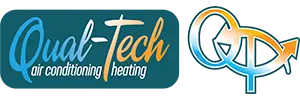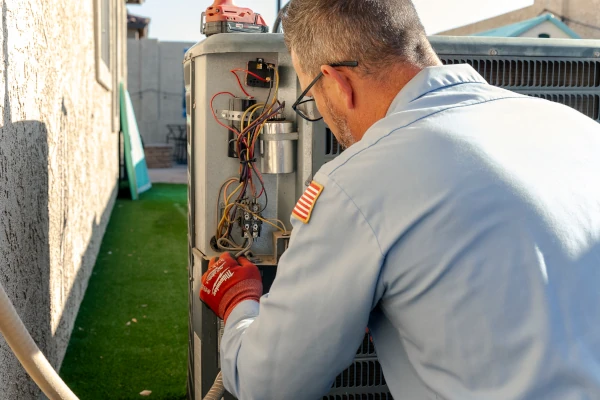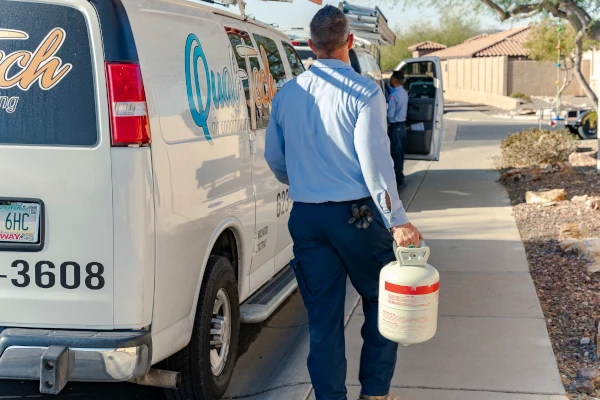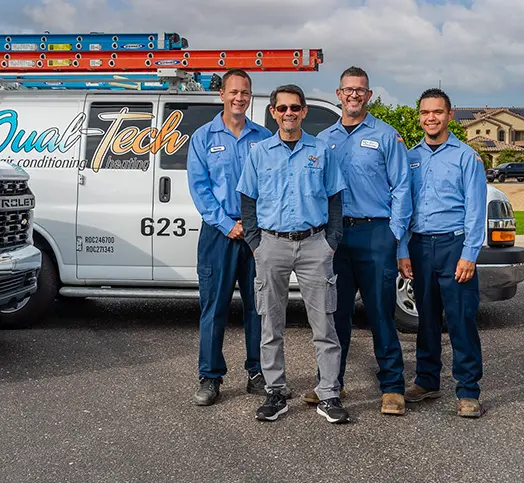Short cycling in air conditioning units is a common yet often overlooked issue that can significantly impact both the performance of your AC and your energy bills. AC short cycling occurs when an air conditioner turns on and off rapidly, much more frequently than it should. Understanding short cycling is crucial for homeowners and property managers alike, as it can lead to decreased comfort, increased energy consumption, and potentially costly damage to your AC system.
How to Identify AC Short Cycling
There are a couple ways of identifying AC short-cycling. One of these is audio signs, and the other: visual
The most noticeable audible sign of AC short cycling is a rapid on-off pattern in your air conditioning unit. You might hear the system starting up, running briefly for about 10 seconds, then shutting off, only to repeat this cycle moments later. This frequent starting and stopping creates a distinctive, repetitive pattern that’s quite different from the normal, longer running cycles of a properly functioning AC unit.
Visual indications of short cycling can be subtle but telling. The most common sign is a noticeable dimming of lights in your home that corresponds with the AC’s rapid cycling. You might observe your lights briefly dimming, returning to normal brightness, then dimming again shortly after. This pattern occurs because each time the AC compressor kicks on, it draws a significant amount of electricity, causing a momentary dip in your home’s power supply.
You can find similar signs your AC may be malfunctioning in our blog post about signs your AC needs repair.
The Dangers of AC Short Cycling
High Electrical Bills
Compressor Damage
Reduced Unit Lifespan
AC short cycling doesn’t just affect the compressor; it impacts the entire system. The frequent on-off cycles stress all components, from electrical to mechanical. This accelerated wear and tear can significantly reduce your AC unit’s overall lifespan. What should last 15-20 years might fail in half that time due to persistent short cycling.
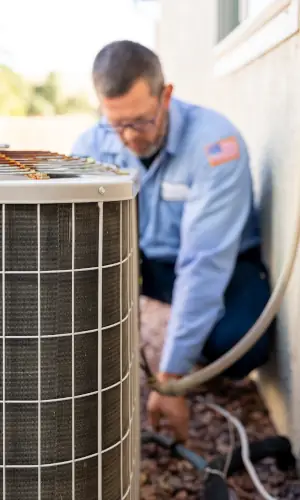
Ineffective Cooling
An AC system operating in short cycles can’t effectively cool your space. It doesn’t run long enough to complete a full cooling cycle, leaving your home at an inconsistent temperature. This results in reduced comfort and potential hot spots in your living areas. Additionally, AC short cycles prevent proper dehumidification, leading to a clammy, uncomfortable indoor environment.
Common Causes of Short Cycling
Low Refrigerant

Dirty Air Filters
A clogged or dirty air filter can restrict airflow through the AC system. This reduced airflow can cause the evaporator coil to freeze, leading to short cycling. Since when airflow is inadequate, the cold refrigerant in the coil can’t absorb enough heat from the air, causing ice to form. This ice buildup further impedes airflow, exacerbating the problem.
Dirty Condenser Coil
Malfunctioning Blower Motor
Other Potential Issues
Several other issues can cause AC short cycling. These include an oversized unit that cools too quickly, faulty thermostat sensors giving incorrect temperature readings, electrical problems causing system shutdowns, or a stuck contactor in the outdoor unit. Faulty capacitors can cause short cycling. Additionally, issues with the compressor itself, such as internal valve problems, can sometimes manifest as short cycling.
What to Do When You Notice AC Short Cycling
Steps Professionals Can Take
 When a technician arrives to address your short cycling AC, they’ll typically start with a comprehensive system check. This includes examining refrigerant levels using specialized gauges to detect any leaks or low pressure. If low refrigerant is the cause, they’ll not only recharge the system but also locate and repair any leaks to prevent future issues. It’s important to insure that your contractor fixes the leaks, and doesn’t just refill the system, as some contractors may neglect repairing leaks, mandating more refills down the line.
When a technician arrives to address your short cycling AC, they’ll typically start with a comprehensive system check. This includes examining refrigerant levels using specialized gauges to detect any leaks or low pressure. If low refrigerant is the cause, they’ll not only recharge the system but also locate and repair any leaks to prevent future issues. It’s important to insure that your contractor fixes the leaks, and doesn’t just refill the system, as some contractors may neglect repairing leaks, mandating more refills down the line.
The technician will also inspect other potential problem areas: cleaning or replacing dirty filters and coils, checking the blower motor’s functionality, and ensuring the thermostat is correctly calibrated. They may also examine electrical components for any faults or wear.
In cases of more complex issues, such as compressor problems, the technician will provide detailed options for repair or replacement, considering factors like the unit’s age and overall condition.
Preventing Short Cycling
Regular maintenance is key to preventing short cycling and ensuring the longevity of your AC unit. Schedule annual professional inspections before the cooling season begins. These check-ups can catch potential issues before they lead to short cycling.
Between professional visits, there are several steps homeowners can take:
- Change or clean air filters monthly during heavy use periods. This maintains proper airflow and prevents strain on the system.
- Keep the area around your outdoor unit clear of debris, leaves, and overgrown vegetation to ensure efficient heat dissipation.
- Clean your indoor vents and ensure they’re not blocked by furniture or curtains.
- Use a programmable thermostat to maintain consistent temperatures and avoid frequent, dramatic temperature changes.
- If you’re installing a new AC, ensure it’s correctly sized for your space. An oversized unit can lead to short cycling.
By following these preventive measures, you can significantly reduce the risk of short cycling, improve your AC’s efficiency, and extend its lifespan, saving both energy and money in the long run.
Short cycling in air conditioning units is a serious issue that can lead to increased energy consumption, reduced comfort, and premature system failure. By recognizing the signs early, taking immediate action, and prioritizing regular maintenance, homeowners can prevent short cycling and its associated problems. Remember, when in doubt, always consult with a qualified HVAC professional to ensure your AC’s optimal performance and longevity. See more information on our services on our AC repair page.
